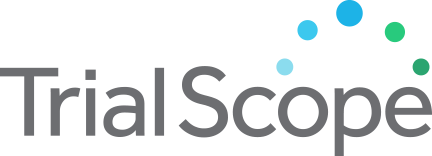The purpose of a clinical trial is to determine the most effective and safest treatment for a disease. Clinical trial evaluation is a key step to translating research into new medicines that can provide better outcomes for patients. The performance of clinical trials is a vital component of U.S. Food and Drug Administration’s drug approval process, without which advances in therapeutics for brain tumor patients would not be possible. Often the lengthiest aspect of the drug approval process is finding people to participate in trials. The Clinical Trial Finder is intended to help raise awareness and increase participation in clinical trials to facilitate brain tumor research and accelerate the development of new drugs and treatments for patients.
Finding a Trial
To help you find clinical trials that may best suit your particular needs, please fill out the filter questions below. As a result of your search and after reviewing the details, if you are interested in learning more about a trial, identify the trial site nearest to your location and contact the site coordinator via email or phone. We also strongly recommend that you consult with your healthcare provider about the trials that may interest you and refer to our terms of service below.
The information returned from your search has been obtained from ClinicalTrials.gov, a service of the U.S. National Institutes of Health, providing information on publicly and privately supported clinical studies of human participants with locations in all 50 States and in 196 countries.
-
A National Registry on Chinese Patients With Lymphangioleiomyomatosis
Pulmonary lymphangioleiomyomatosis (LAM), a disease characterized by diffuse cystic changes in the lung, is a rare disorder that affects almost exclusively women. The main objectives of this study are to accurately evaluate the prevalence of LAM, the status of disease, the diagnosis and treatment, the quality of care, and the health related outcomes in China.
-
A Phase IV Study of Safety and Efficacy of Everolimus in Taiwanese Patients With Tuberous Sclerosis Complex Who Have Renal Angiomyolipoma (TSC-AML)
The purpose of this prospective study is to assess the safety and efficacy of everolimus in Taiwanese patients with renal angiomyolipoma (AML) associated with tuberous sclerosis complex (TSC) . Only patients who fulfil the local reimbursement criteria of everolimus for TSC-AML will be included in this study.
-
Assessing Changes in Multi-parametric MRI in MS Patients Taking Clemastine Fumarate as a Myelin Repair Therapy
The clinical trial is intended to assess for clinical evidence of Clemastine Fumarate as a myelin repair therapy in patients with chronic inflammatory injury-causing demyelination as measured by multi-parametric MRI assessments. No reparative therapies exist for the treatment of multiple sclerosis. Clemastine fumarate was identified along with a series of other antimuscarinic medications as a potential remyelinating agent using the micropillar screen (BIMA) developed at the University of California, San Francisco (UCSF). Following in vivo validation, an FDA IND exemption was granted to investigate clemastine for the treatment of...
-
Assessment of Adjunctive Cannabidiol Oral Solution (GWP42003-P) in Children With Tuberous Sclerosis Complex (TSC), Dravet Syndrome (DS), or Lennox-Gastaut Syndrome (LGS) Who Experience Inadequately-controlled Seizures
This study will be conducted to evaluate the safety, pharmacokinetics (PK), and efficacy of adjunctive GWP42003-P in participants < 2 years of age with tuberous sclerosis complex (TSC), Lennox-Gastaut syndrome (LGS), or Dravet syndrome (DS).
-
A Study of Radiprodil on Safety, Tolerability, Pharmacokinetics, and Effect on Seizures and Behavioral Symptoms in Patients With TSC or FCD Type II
Study RAD-GRIN-201 is a phase 1B/2A trial to assess safety, tolerability, pharmacokinetics (PK), and potential efficacy of radiprodil in participants with Tuberous Sclerosis Complex (TSC) or Focal Cortical Dysplasia (FCD) type II. The study is open-label, so all participants will be treated with radiprodil. Subjects' participation in the study is expected to last up to six months in Part A and one year in Part B/long-term treatment period. The treatment period in Part B may be extended based on a favorable benefit/risk profile.
-
A Study to Investigate Behavioral and Other Co-Occurring Outcomes With Epidiolex as Add-On Therapy in Participants Aged 1 to 65 Years of Age With Tuberous Sclerosis Complex
The purpose of this study is to investigate behavioral and other co-occurring outcomes with EPID(I/Y)OLEX as an add-on therapy in participants aged 1 to 65 years with tuberous sclerosis complex (TSC) who experience seizures.
-
A Study to Test the Efficacy and Safety of Staccato Alprazolam in Study Participants 12 Years of Age and Older With Stereotypical Prolonged Seizures
The purpose of the study is to assess the success of a single administration of Staccato alprazolam compared with placebo both in rapidly terminating a seizure episode within 90 seconds and with no recurrence of seizure(s) up to 2 hours after investigational medicinal product (IMP) administration.
-
Autism Spectrum Disorder (ASD) and Intellectual Disability (ID) Determinants in Tuberous Sclerosis Complex (TSC)
The purpose of this study is to characterize the developmental phenotype of ASD and ID and to identify biomarkers using advanced MRI methodology and electrophysiological biomarkers of synaptic function and connectivity predictive of ASD and ID presence and severity in patients with TSC. In addition, this study will be establishing infrastructure for the collection and storage of human bio-specimens, including genetic material, from TSC patients and their family members with ASD.
-
Basimglurant in Children, Adolescents, and Young Adults With TSC
The study intends to show that basimglurant provides effective seizure control in children, adolescents and young adults with Tuberous Sclerosis Complex (TSC).
-
Clinical Presentation and Renal Outcome of Patients With Tuberous Sclerosis Complex and/or Renal Angiomyolipoma in the Great West Region of France
This study aims to investigate the factors (clinical, care-related and genetic) affecting renal outcome in patients with TSC (Tuberous sclerosis complex)

